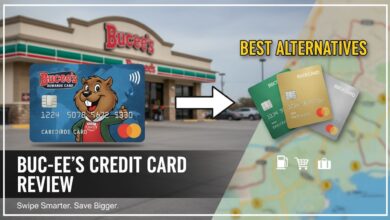Relief1 Sandusky Oh Charge On Credit Card 2025

Relief1 Sandusky Oh: If you received a charge on your credit card statement from Relief1 in Sandusky, Ohio, you may be wondering what this charge is for. Relief1 is a debt relief company that offers services to help consumers get out of debt faster. Here’s an overview of Relief1 and what the charge on your statement could represent if you are a Relief1 customer.
What is Relief1?
Relief1 is a debt settlement company based in Sandusky, Ohio. They provide debt relief services to consumers struggling with unsecured debt like credit cards, medical bills, and personal loans.
Relief1 offers a debt settlement program where they work on your behalf to negotiate with creditors to settle debts for less than the full amount owed. This helps you pay off debt faster and for a reduced amount.
Why Would Relief1 Charge My Credit Card?
If you enrolled in Relief1’s debt settlement program, there are a few reasons why you may see a charge from them on your credit card statement:
Monthly service fee: Relief1 charges an ongoing monthly fee for its services. This fee ranges from about $60-100 per month. The fee gets withdrawn automatically each month from the credit card or bank account you provided.
Settlement payment: When Relief1 reaches a settlement agreement with one of your creditors, they will withdraw the agreed-upon settlement amount from your dedicated account to pay the creditor. This withdrawal may show up as a charge from Relief1.
Set-up fee: Some Relief1 plans include an initial set-up fee that might be charged when you first enroll. This covers administrative costs.
Missed payment: If you miss a payment to one of your enrolled creditors, Relief1 may advance the amount owed and then collect it from you by charging your credit card.
What to Do if You Don’t Recognize the Charge
If you see a charge from Relief1 but don’t recall signing up for their debt settlement services, here are some steps to take:
- Contact Relief1 directly and ask for clarification on the charge. Make sure they can verify your enrollment.
- Check bank statements to see if you authorized payments to Relief1 that you may have forgotten about.
- Dispute the charge with your credit card company if you find no evidence that you enrolled with Relief1 or authorized the charge.
- Monitor your credit report to see if Relief1 opened any accounts in your name without permission. Dispute any errors.
- Consider checking your credit for any other suspicious activity or accounts opened without authorization. Place a fraud alert if you suspect identity theft.
What Happens If I Dispute the Relief1 Charge?
If you dispute a charge from Relief1 with your credit card issuer, here is what typically happens:
- The credit card company will request documentation from Relief1 showing proof that you authorized the charge.
- Relief1 has to provide a signed agreement, contract, or other evidence showing you agreed to their fee and services.
- If Relief1 cannot provide this, the dispute is usually settled in your favor, and the charge is reversed.
- The dispute process may take 30-90 days, depending on the complexity of the case.
- It is possible that Relief1 could pursue payment by other means if the dispute succeeds and they still believe you owe the amount.
How Can I Cancel Relief1 and Stop Charges?
If you want to cancel your agreement with Relief1 and stop future charges, here are some options:
- Call Relief1 and request to cancel the debt relief program. Be sure to obtain written confirmation.
- Notify your bank or credit card company that you withdrew authorization for Relief1 to charge your accounts.
- Send a certified cease and desist letter to Relief1 headquarters demanding cancellation.
- Close the credit card or bank account they have been charging, so no more withdrawals can be processed.
- Pay off any legitimate fees still owed to Relief1 to avoid collection actions.
- Report Relief1 to the Better Business Bureau if they continue charging you after cancellation.
- Submit a complaint about Relief1 to the Consumer Financial Protection Bureau.
Am I legally obligated to pay Relief1 if I dispute the charges?
If you dispute charges from Relief1 and initiate a chargeback with your credit card company, you are typically not obligated to pay the disputed amounts, provided the dispute is resolved in your favor. However, there are some exceptions:
- If you did sign a contract with Relief1 agreeing to their fees, you are still legally bound to pay even if you later dispute the charges. Read any contract carefully before signing.
- If you dispute the charges but Relief1 provides adequate evidence to the credit card company that you authorized the payments, you may still owe the money.
- If you enrolled in a debt settlement program with Relief1 and they negotiated settlements on your behalf, you may be obligated to pay settlement amounts to avoid being sued by creditors.
- If you dispute Relief1 charges successfully but later voluntarily make payments to them, that could be interpreted as admitting the debt is valid.
- If Relief1 sues you to collect disputed fees and wins a judgment, you would be legally obligated to pay according to the court order.
To avoid payment obligations, it is important to verify that you have no signed contract or debt relief agreement with Relief1. Check for any available defenses, such as unclear or deceptive terms. Consult a consumer lawyer if you need help determining your legal options.
Does Relief1 charge an upfront fee?
Relief1 typically does not charge any upfront fees before settling any debts in its debt settlement programs. However, there are some exceptions:
- They may charge an initial set-up or account activation fee when you first enroll in their program. This fee is generally under $75.
- Some of their settlement plans include an initial consultation or assessment fee that must be paid up front before debt relief services can begin.
- If Relief1 requires you to set up a dedicated bank account to accumulate funds for settlements, there may be an upfront fee to open the account.
- You need to pay the first month’s service fee to start the program. Ongoing monthly fees are then charged for the duration of the program.
- In rare cases, there could be a small upfront administrative fee associated with setting up the dedicated bank account used for settlements.
The key is that Relief1 cannot legally charge a large upfront fee before negotiating any settlements with creditors or providing services. Many debt relief companies were sued in the past for charging hefty initial fees and not delivering results, so Relief1 avoids this prohibited practice.
What is the total cost for using Relief1’s services?
The total cost of using Relief1’s debt settlement services can vary considerably depending on your specific situation and debt relief program. However, these are some of the common costs to expect:
- Monthly service fees: These range from $60 to $100 per month and continue for the duration of your program until all debt is settled.
- Settlement fees: For each debt that Relief1 settles, they typically charge 15% to 25% of the total settled amount as their fee.
- Initial set-up fees: Some programs have upfront admin or account set-up fees of up to $75.
- Dedicated account fees: If required to open a dedicated bank account, the costs are around $10 per month.
- Creditor late fees: You are responsible for any late fees if payments are missed while enrolled.
- Collection fees: Debt collection costs from creditors could be passed on to you.
- Tax implications: Settled debt could be reported as taxable income. Consult a tax pro.
For a $10,000 credit card debt, total fees could range from $1,500 to $2,500 for a complete debt settlement program. The majority of costs come from the ongoing monthly service fees.
Are there any hidden fees or costs I should know about?
When enrolling in Relief1’s debt settlement program, be on the lookout for any hidden fees and costs beyond the advertised monthly service fees. Here are some to keep in mind:
- Account set-up fees – Some plans include upfront account activation or establishment fees.
- Early termination fees – If you cancel before completing the program, there may be cancellation costs.
- Non-sufficient funds fees – If a payment to a creditor or Relief1 bounces, you may be charged NSF fees.
- Late payment penalties – Relief1 may charge their late fees for missed program payments.
- Dedicated account fees – Ongoing costs for required settlement accounts could apply.
- Collection fees – If Relief1 needs to send accounts to collections, the costs could be passed to you.
- Tax consequences – Settled debt may be taxed as income, which isn’t advertised.
- Credit damage – Late payments while settling debts could further harm credit scores.
Read the full contract and ask questions to understand the complete range of fees you will and won’t pay before enrolling with Relief1. This avoids being surprised by hidden costs.
What do people say in Relief1 reviews?
Relief1 reviews are mixed, with some customers praising their low fees and debt settlement results while others complain about poor customer service and hidden fees. Here’s an overview of common Relief1 reviews:
Positive:
- Low monthly fees compared to other debt settlement companies.
- Easy to enroll and set up a debt settlement program.
- Responsive customer service agents.
- Debt amounts were reduced by 40-60% in some cases.
Negative:
- Monthly fees continued for longer than expected to settle debts.
- Poor communication about the status of settlements.
- Hit with unexpected fees like account closure fees.
- Customer service is unwilling to address complaints.
- The program took longer than originally projected.
Neutral:
- The program is very hands-off – they handle communicating with creditors.
- You have to be disciplined about saving for settlements each month.
- The best chance of success is being very behind on debt payments.
- Your credit score will drop initially when debts go delinquent.
Overall, experiences seem to depend on each person’s unique financial circumstances. Relief1 provides a conduit to negotiate with creditors, but collecting settlement funds can take time.
What are some key alternatives to Relief1 for debt relief?
Instead of using Relief1 for debt settlement, here are a few alternatives to consider:
Debt management plan – Work with a credit counseling agency to consolidate debts into one monthly payment and negotiate lower interest rates. Typically only need to pay back the full principal (not interest) owed.
Balance transfer card – Transfer high-interest credit card balances to a card offering 0% intro APR for up to 21 months to pay down principal faster. Watch for transfer fees.
Debt consolidation loan – Take out a personal loan at a lower interest rate and use th funds to pay off credit cards and other debts. Reduces interest paid.
Chapter 13 bankruptcy – Obtain court-supervised debt restructuring to discharge unsecured debts and catch up on mortgage/car arrears over 3-5 years. Impact on credit score.
DIY negotiations – Attempt calling creditors yourself to request waiving of fees, reduced APR, and settlement arrangements. No fees, but a high-time commitment.
Home equity loan – If you have equity in your home, a cash-out refinance or home equity loan could provide funds to pay off higher-interest credit cards. Risks losing home if can’t repay.
What are the pros and cons of using Relief1 versus bankruptcy or debt management?
Here is an overview of the key pros and cons of using Relief1 for debt settlement compared to bankruptcy and debt management:
Relief1 Pros:
- Settle debts for less than the full amount owed
- Typically faster than completing a bankruptcy or debt management plan
- Less long-term credit score damage than bankruptcy
Relief1 Cons:
- High monthly fees can accumulate
- Creditors can still sue if they refuse to negotiate
- Tax implications on settled debt
- Credit scores drop initially when debts become delinquent
Bankruptcy Pros:
- Eliminates eligible debts entirely
- Collectors must cease contact after filing
- Can stop foreclosures, repossessions, and garnishments
- More complete fresh start
Bankruptcy Cons:
- Negative impact on credit for 7-10 years
- Potential loss of property if a liquidation is filed
- Bankruptcy filing appears permanently on the credit history
Debt Management Pros:
- Interest rates are often lowered by creditors
- One monthly payment to the agency
- Helps avoid late fees and calls from collectors
Debt Management Cons:
- Typically need to repay the full principal owed
- Program length is often 4-5 years
- Missed payments could get you dropped from the program
As you can see, each option has tradeoffs. Relief 1 is faster, but bankruptcy provides a more complete fresh start. Analyze your specific financial situation to decide which option may be right for you.
What tips do you have for getting the most value out of Relief1’s program?
If you enroll with Relief1 for debt settlement, here are some tips to help you maximize the value of their services:
- Thoroughly review the debt relief contract and ask questions before signing up. Make sure you understand all costs.
- Be disciplined about setting aside the monthly amounts needed for settlements each month. Missing savings goals will delay the program.
- Communicate regularly with your debt specialist. Alert them immediately if your situation changes.
- Prioritize debts wisely. Settle high-interest debts first when possible.
- Avoid taking on new debt so you can put as much money towards settlements as possible each month.
- Be patient as the process can take time. Creditors may initially refuse offers.
- Review settlements carefully before approving them. Negotiate further if you’re unsatisfied with the terms.
- Watch for any negative impacts on your credit and address them quickly to limit damage.
- Seek tax advice to minimize any tax liabilities on settled debt amounts.
Following these tips will help you stick to the program and settle your debts as quickly as possible. Consistent participation is key to success with debt settlement.
What risks should I watch out for if enrolling with Relief1?
While debt settlement through Relief1 can help resolve unsecured debts, there are some potential risks to watch out for:
Fees accumulating: Relief1’s monthly service fees add up over time. If it takes longer than expected to settle your debts, the fees can reach unanticipated levels.
Settlement rejection: Creditors have the right to reject any settlement offers and pursue full repayment. Relief1 cannot force acceptance.
Credit score impact: Your credit score will drop when accounts become delinquent and may remain low until debts are settled.
Tax consequences: The IRS may view forgiven debt from settlements as taxable income. You may owe taxes on settled amounts.
Continued collections: Creditors can continue collection efforts until a settlement is formally agreed to. You may still receive calls and letters.
Lawsuits: For recent debts, creditors may sue you to obtain a court-ordered judgment rather than settle. This exposes you to wage garnishment.
Scams: Avoid questionable companies posing as debt relievers. Only work with reputable providers like Relief1.
New debt accrual: Taking on additional debt while settling old balances makes it harder to complete the program successfully.
Carefully considering these risks allows you to make an informed choice on whether debt settlement aligns with your goals and circumstances. Proceed cautiously.
FAQ
Here are answers to some frequently asked questions about Relief1 charges and services:
Q: Why did Relief1 charge my credit card when I haven’t enrolled with them?
A: This could be an erroneous charge or an indicator of identity theft if you never signed up for Relief1 services. Immediately dispute the charge and monitor your statements for any other suspicious charges.
Q: Can I cancel my program after enrollment and get a refund from Relief1?
A: Cancellation and refund policies depend on your specific contract. There are often non-refundable fees even if you exit shortly after enrolling. Read the fine print carefully beforehand.
Q: How long does it take Relief1 to settle all my debts in the program?
A: The debt settlement process typically takes between 24-48 months, but can vary based on your total debt amount, savings ability, and creditor willingness to negotiate settlements.
Q: Will my credit score be negatively impacted by Relief1?
A: Your credit will likely drop initially when accounts are delinquent, but may rebound once debts are settled. The impact also depends on your current credit profile.
Q: Can I pick which debts get settled first by Relief1?
A: You can prioritize which debts to tackle first. It makes sense to settle high-interest debt as early as possible. But it also depends on which creditors are willing to negotiate.
Q: How are funds for settlements safely stored by Relief1?
A: Settlement funds are held in a dedicated FDIC-insured bank account specifically for your debt relief program until a settlement is reached.
Q: Does entering the Relief1 program stop collection calls and lawsuits?
A: You may still receive contacts from collectors while enrolled. Formally settling each debt is the only way to stop these activities.
Q: What are the tax consequences of debt settlement?
A: In many cases, forgiven debt from settlements must be claimed as taxable income. Consult a tax advisor to understand any potential tax liability.
Q: Can I enroll with Relief1 if I have a pending bankruptcy case?
A: It’s best to avoid overlapping debt relief solutions. Discuss with your bankruptcy lawyer before starting any debt settlement program.



